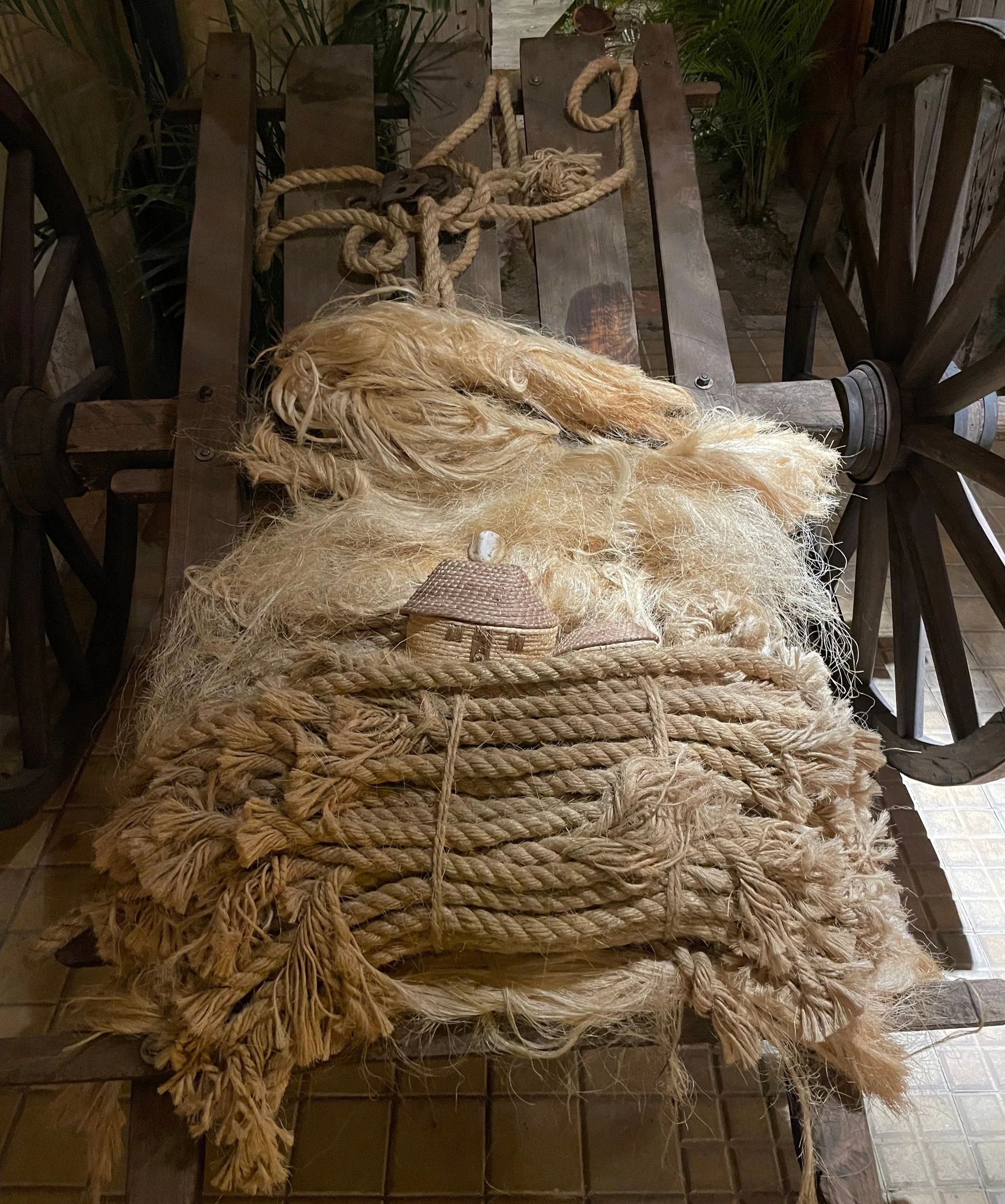The History of Sisal - Green Gold
This blog series follows the captivating history of Agave sisalana.
Taking you on a journey through the history of one of the world’s lesser-known but highly impactful agave species. From its contribution to the development of ancient civilisations in Mexico to the plains of Africa, where hundreds of people were involved in processing a valuable commodity, then onward to the future of agave spirit production outside of Mexico.
There are many complicated and interwoven stories of international trade having considerable socioeconomic impact that can have lasting effects and permeate many areas of society. What I’d like to lay out for you in this blog is how Agave sisalana has its own complicated history in the very place it originates, the heart of the Yucatan in a town nearby the state capital of Merida.
Through the 18th and 19th Centuries, Mexico’s economic development was marked by the dominance of large agricultural estates (haciendas), which concentrated wealth and power in the hands of elite families, often of Spanish descent. This system perpetuated deep social and economic inequalities, as landless peasants and Indigenous communities were exploited for labour while family-owned wealth controlled commerce and political influence. This characterises precisely how, when demand for high-performing fibres that could be extracted from sisal increased, the haciendas growing sisal in the Yucatan proliferated, benefiting the land-owners and exploiting the local labour force
Sisal, also known as Henequen, has a deep history in the Yucatan Peninsula
When travelling in Merida, you may find remnants of the industry that was so influential in the Yucatan Peninsula during the 1800s. An industry that contributed to large amounts of wealth being generated but alas did not have a fortuitous ending.
Vast areas of land were cultivated for growing sisal and these plants were harvested to produce huge quantities of the valuable natural fibre. As demand continued to increase so did the volume of sisal fibre exported, with the majority of fibre being fabricated into heavy-duty ropes used for large shipping vessels. Interestingly, still to this day, sisal outperforms any synthetic material with regards to degradation and retaining strength, with the added benefit of not producing microplastics and polluting the environment. The success of these haciendas that capitalised on the demand for sisal fibres led to a lot of wealth being generated by the families of land-owners, so much so that the sisal agave was coined the term ‘Green Gold’. At the height of the boom, there were nearly 1,200 haciendas within an 80 km radius around the city capital of Mérida. By 1915 during the peak of production, more than 1,200,000 sisal bales were shipped out of Yucatán and into the United States. The numbers became so high that almost 70 percent of all cultivated land in Yucatán was devoted to the henequen production
The grand Hacienda of Yaxcopoil
All was well for a few decades as the demand from exports to the US continued to support the business of producing sisal fibres. However, as often happens with markets, cheaper and easily accessible synthetic materials created a dramatic decline in demand for sisal and the industry collapsed.
During the greener years of sisal’s proliferation, a scientist from halfway around the world had a curious idea to take production to an unlikely destination and turn fortunes for himself. This is where we are headed to next, circumnavigating the globe to the tropical coast of East Africa.




